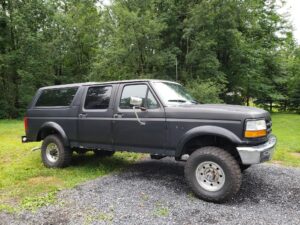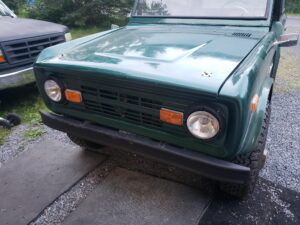The Impact of Lift Kits on Truck Stability and Performance

When considering modifications for your truck, lift kits often come to the forefront of discussions. While many enthusiasts are drawn to the aesthetic appeal and increased ground clearance offered by lift kits, it’s crucial to understand the profound effects these modifications can have on a truck’s stability and overall performance.
Understanding Lift Kits
Lift kits are aftermarket components designed to raise a vehicle’s ride height. They can be particularly appealing for off-road enthusiasts or those who frequently navigate rugged terrains, as they provide improved clearance for larger tires and enhance approach and departure angles. However, these modifications come with trade-offs that must be carefully evaluated.
Center of Gravity and Handling
One of the most significant changes brought on by lifting a truck is the alteration of its center of gravity. When a truck is lifted, the center of gravity shifts higher, which can lead to increased body roll during cornering and reduced stability on inclines. This is particularly crucial for vehicles that are used both on highways and off-road, as the handling characteristics can become compromised.
Moreover, the change in the roll centers must be addressed. Improper modifications can lead to handling that feels loose or unpredictable, especially during sharp turns or sudden maneuvers. A lifted truck that lacks the appropriate suspension upgrades can be susceptible to rollover risks, compromising the safety of the driver and passengers.
Suspension System Dynamics
The type of suspension system used in conjunction with lift kits plays a pivotal role in performance. High-quality lift kits are designed to maintain or even enhance suspension dynamics, allowing for better articulation and travel. However, if modifications are done poorly or with inferior kits, the result can be disappointing. The truck may experience poor braking performance, marginal vehicle control, or excessive bounce when navigating uneven surfaces.
Adapting to raised suspension often requires thoughtful consideration of additional components. Upgrading shock absorbers and springs can help mitigate adverse effects and enhance overall ride quality. Shocks need to be selected carefully, as multiple shock setups—while visually appealing—may complicate performance and handling if not chosen correctly.
Legal and Safety Considerations
It’s crucial to remember that lifting a truck may not only affect its handling but can also have legal implications. Many states impose restrictions on vehicle height modifications, citing safety concerns. Before embarking on a lifting project, it is wise to consult local regulations. Following OEM standards or guidelines from reputable aftermarket manufacturers can help ensure that the modifications do not compromise vehicle safety.
Conclusion
In conclusion, lift kits can undoubtedly enhance a truck’s appeal and performance capabilities, particularly for off-road applications. However, the impact on truck stability and control cannot be understated. A well-engineered lift, coupled with the right suspension upgrades and considerations for legal requirements, can lead to a rewarding experience that meets both aesthetic desires and performance needs. Enthusiasts are encouraged to prioritize safety and handling over mere visual modifications to ensure an enjoyable and secure driving experience. Whether for work or play, a properly lifted truck can offer the best of both worlds when appropriately executed.


